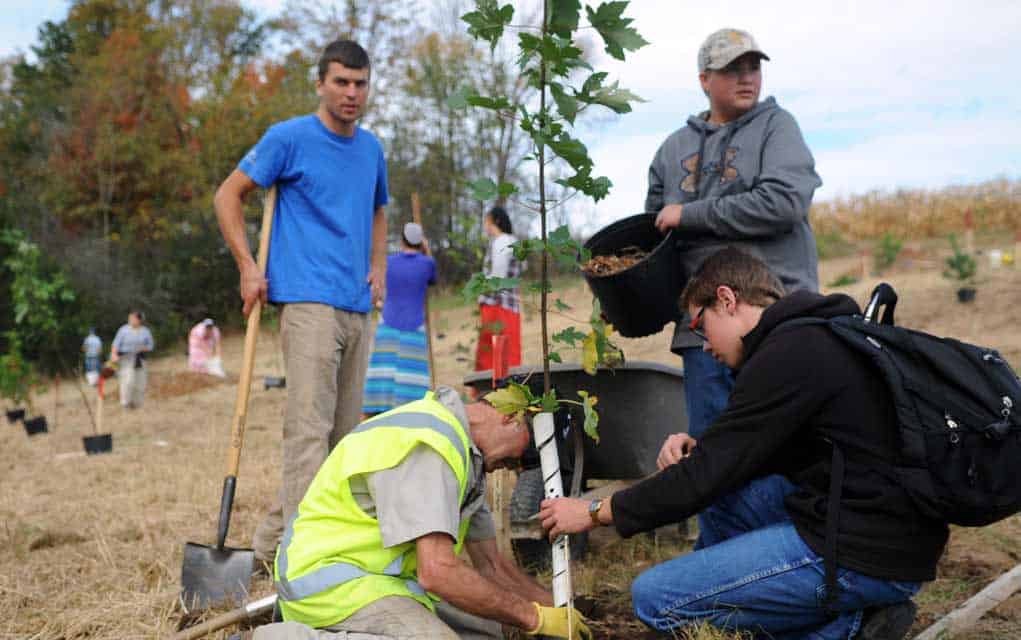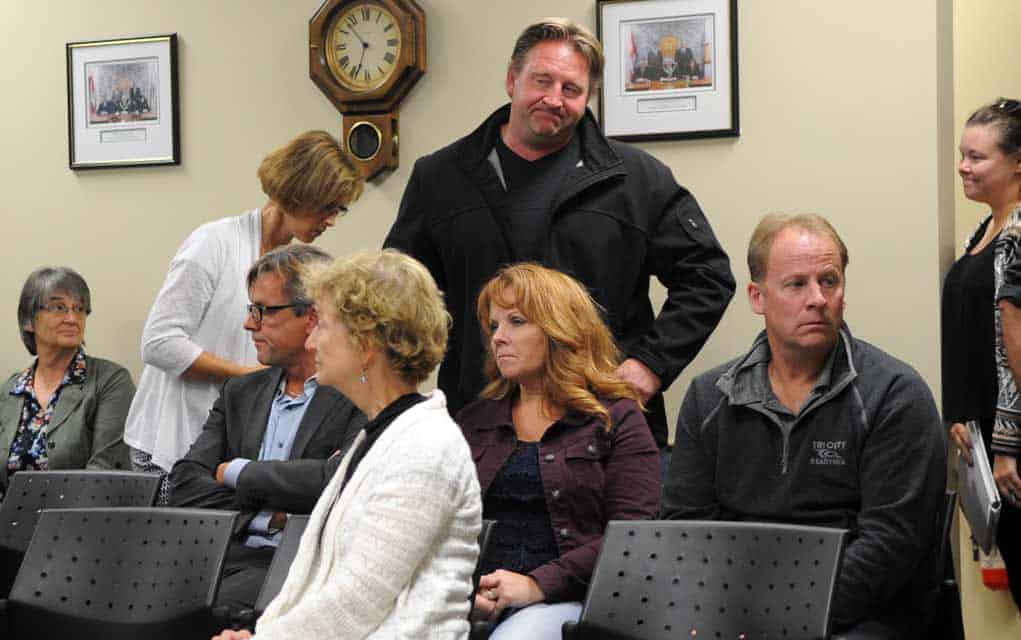It started with a simple premise: plant a tree for every person in Woolwich. Back when the members of the Township of Woolwich Environmental Enhancement Committee (TWEEC) first proposed the goal in 2011, it must have seemed a far off prospect. But this week, the group achieved just that by planting 23,000 trees in the township, with students from EDSS rounding out those final few.
“In the short-term, our goal was to plant one for every citizen in Woolwich. The thought being that if everyone just went out and planted one, we’d all be done in a big, fast hurry,” laughed TWEEC member Inga Rinne.
Of course, a 100 per cent participation from the township seemed unlikely – and the goal took a few years to reach rather than an afternoon. But with the final tree planted on Tuesday, the work is over right? Rinne, who spearheaded the Trees for Woolwich project and helped come up with the original concept, says ‘no.’
For one, the population of Woolwich isn’t 23,000 anymore. Rinne says that, according to numbers given to her by the township, Woolwich has swelled to 27,127 and counting. For another, there is still much more work to be done.

With the original number met, TWEEC voted on a new plan October 5 for a greener township. The group decided to ditch the original idea of one tree to a person, or else they’d be continuously “chasing their tails” to catch up with the changing population.
Instead, the group decided to set a minimum target of 5,000 trees planted each year in Woolwich. Beyond that, the group are focussing on priority areas for future tree plantings, such as along waterways, trails and roadsides.
Besides the planting itself, the group wants to focus more on educating the wider community on the ecological benefits and economic supports for tree planting. Farmers and large landowners, for example, have some compelling financial incentives for planting trees on their property to capitalize on, says Rinne. Business owners can find the benefit in supporting greener, more attractive downtown cores to bring in customers, while pedestrians can take advantage of the shade or enjoy the sights.
“I think that the benefits of trees in so many different applications are becoming more and more apparent. Whether it’s the benefit of shade and cooling in the summer, the benefit of a bit of a windbreak which reduces your heating cost in the winter,” she said.
“Whether it’s just plain aesthetics, the benefit that every tree plays its part in cleaning our air … There are locations where we planted to eliminate erosion.”
Rinne is keen to point out that while TWEEC is organizing and supporting tree planting in the community, they are not actually out there planting every single tree. Rather, they encourage people to do the planting themselves, and then to inform to committee. The number then gets added to the overall tally.
“We’re looking to facilitate planting,” noted Rinne.
Coming out on the pleasantly warm Tuessday afternoon, a group of about 40 junior students from the EDSS’s Elmira Life and Work Skills (ELAWS) program, had the distinction of planting the final few trees to reach 23,000. The group has worked with TWEEC before, helping to create the “living snow fence” along highway 85, between Elmira and St. Jacobs.
The ELAWS program is a specially designed co-op program for parents who may wish for their children to learn a family trade. The program lets the students split their time between work and studies, while still allowing them their high school diploma.
If you’ve planted any trees, you’re encouraged to add to the count by contacting TWEEC at treesforwoolwich@gmail.com.









